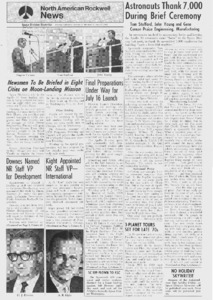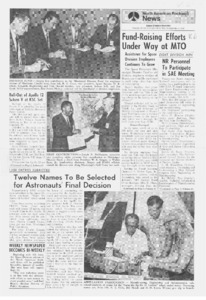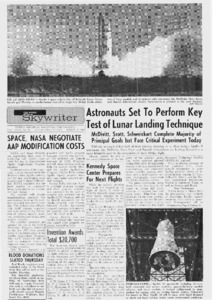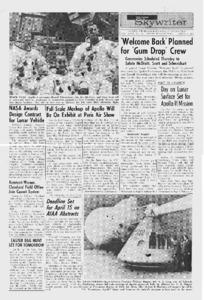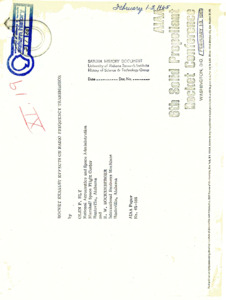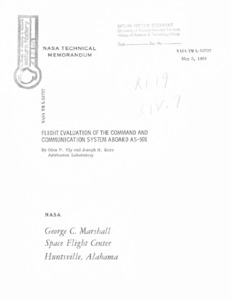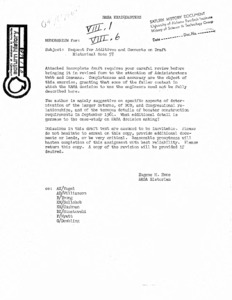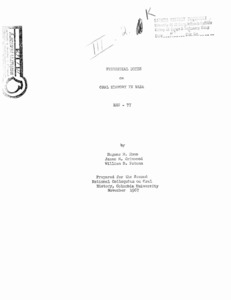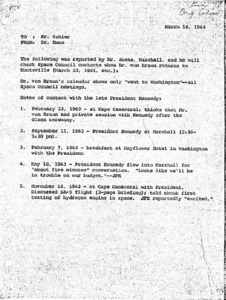
Browse Items (970 total)
Sort by:
-
"Astronauts thank 7,000 during brief ceremony."
A news article detailing a ceremony in which astronauts thank the crew who built their rocket. -
"North American Rockwell News: Space Division Skywriter: Volume 29 Number 37."
An entire newspaper containing a number of articles both related and not related to the Saturn program. -
"Astronauts set to preform key test of lunar landing technique."
News article detailing an experiment revolving around taking photographs from a high altitude to observe the Earth's surface. -
"Welcome back planned for 'Gum drop' crew."
News article detailing the planned 'Welcome back' events surrounding the resturn of the Apollo 9 crew. -
"Rocket exhaust effects on radio frequency transmission."
Presented by Olen P. Ely, National Aeronautics and Space Administration, Marshall Space Flight Center, Huntsville, Alabama and R. W. Hockenberger, International Business Machines. Paper that explores the effects of rocket-engine exhaust on radio-signals. -
"Flight Evaluation of the Command and Communication System Aboard AS-501."
The first test of the command and communications system, a unified frequency S-band system, aboard AS-501 was successful. Compatibility of this system with the MSFN/USB sites was established. The onboard transponder and antenna system including antenna switching performed as predicted. The command performance was excellent with 5747 valid commands received onboard out of 5748 commands transmitted. Data reduction problems prevented a complete analysis of the tracking data. Telemetry system performance was satisfactory with a measured bit-error-rate of 4 x10-5 while over the Ascension Island station. This flight provided valuable data which can be used to define vehicle to-ground-station interfaces, to establish attitude constraints during translunar injection, and to improve operational procedures. One more test as successful as the AS-501 test would qualify the system as operational.; May 3,1968. -
"Memorandum : request for additives and comments on draft historical note 57."
Memorandum requesting for comments on historical draft note. -
"Historical Notes on Oral History in NASA."
Prepared for the Second National Colloquium on Oral History, Columbia University. Contains notes on the oral history of NASA. -
"Report to Mr. Sohier from Dr. Emme."
Report detailing dates of Dr. Akens Marshall meetings with President Kennedy.
